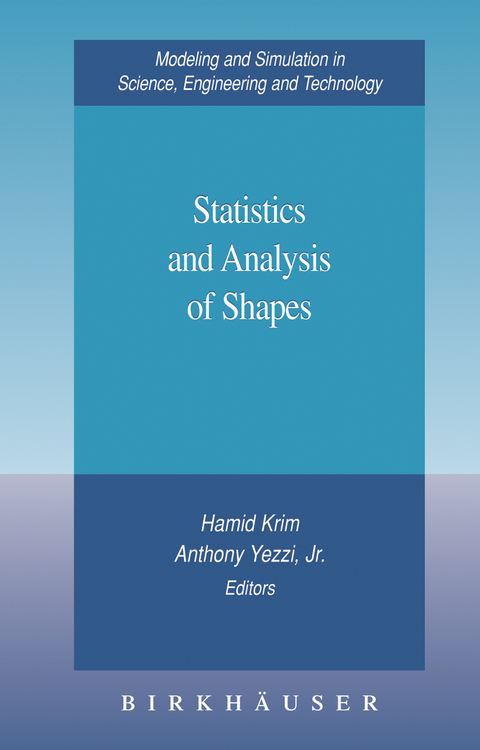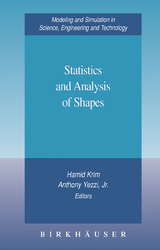Statistics and Analysis of Shapes
Birkhauser Boston Inc (Verlag)
978-0-8176-4376-8 (ISBN)
Medial Axis Computation and Evolution.- Shape Variation of Medial Axis Representations via Principal Geodesic Analysis on Symmetric Spaces.- 2D Shape Modeling using Skeletal Graphs in a Morse Theoretic Framework.- Matching with Shape Contexts.- Shape Recognition Based on an a Contrario Methodology.- Integral Invariants and Shape Matching.- On the Representation of Shapes Using Implicit Functions.- Computing with Point Cloud Data.- Determining Intrinsic Dimension and Entropy of High-Dimensional Shape Spaces.- Object-Image Metrics for Generalized Weak Perspective Projection.- Wulff Shapes at Zero Temperature for Some Models Used in Image Processing.- Curve Shortening and Interacting Particle Systems.- Riemannian Structures on Shape Spaces: A Framework for Statistical Inferences.- Modeling Planar Shape Variation via Hamiltonian Flows of Curves.- Approximations of Shape Metrics and Application to Shape Warping and Empirical Shape Statistics.
| Reihe/Serie | Modeling and Simulation in Science, Engineering and Technology |
|---|---|
| Zusatzinfo | 143 Illustrations, black and white; XII, 396 p. 143 illus. |
| Verlagsort | Secaucus |
| Sprache | englisch |
| Maße | 155 x 235 mm |
| Themenwelt | Informatik ► Theorie / Studium ► Künstliche Intelligenz / Robotik |
| Mathematik / Informatik ► Mathematik ► Angewandte Mathematik | |
| Mathematik / Informatik ► Mathematik ► Geometrie / Topologie | |
| Mathematik / Informatik ► Mathematik ► Graphentheorie | |
| Mathematik / Informatik ► Mathematik ► Statistik | |
| Mathematik / Informatik ► Mathematik ► Wahrscheinlichkeit / Kombinatorik | |
| Technik | |
| ISBN-10 | 0-8176-4376-1 / 0817643761 |
| ISBN-13 | 978-0-8176-4376-8 / 9780817643768 |
| Zustand | Neuware |
| Haben Sie eine Frage zum Produkt? |
aus dem Bereich




